The Art of Situational Awareness in Self-Defense Training
In our fast-paced world, the concept of situational awareness has become more important than ever, especially when it comes to self-defense. Imagine walking down a busy street, headphones in, completely absorbed in your own world. Suddenly, you notice a group of individuals acting suspiciously nearby. That moment of awareness could be the difference between a safe journey and a potential threat. Situational awareness is not just about being alert; it’s about understanding your environment, recognizing potential dangers, and taking proactive measures to protect yourself. This article explores the crucial role of situational awareness in self-defense, covering techniques, benefits, and practical applications to enhance personal safety and preparedness in various environments.
Situational awareness involves recognizing and interpreting environmental cues. It’s like having a sixth sense that allows you to perceive what’s happening around you. This skill is essential in self-defense because it enables individuals to identify potential threats before they escalate into dangerous situations. For instance, being aware of your surroundings can help you notice someone following you or an unusual vehicle parked too long in your vicinity. By developing this awareness, you can often avoid confrontations altogether, making it a key component of personal safety.
To effectively enhance your situational awareness, it's important to understand its key components. These include observation, perception, and assessment. Together, they form a framework that helps individuals respond effectively to potential threats.
Effective observation techniques are vital for situational awareness. It’s not just about looking; it’s about seeing. You need to train yourself to be conscious of your environment. Here are some methods to improve your observational skills:
- Scanning Environments: Regularly scan your surroundings, taking note of people, exits, and any potential hazards.
- Recognizing Unusual Behaviors: Pay attention to individuals who seem out of place or are acting strangely.
Environmental scanning involves systematically surveying your surroundings. Think of it like a radar system that continuously checks for potential threats. Strategies for maintaining awareness include:
- Practicing situational drills in various settings to get comfortable with scanning.
- Using mirrors, reflections, or simply turning your head to keep an eye on your surroundings.
Recognizing behavioral cues can signal potential danger. People often communicate their intentions through body language. By interpreting these signals, you can assess threats accurately. For example, someone who is overly fidgety or avoids eye contact may be acting suspiciously. Being able to read these cues can give you the upper hand in a potentially dangerous situation.
Perception is crucial for situational awareness. It’s not just about what you see; it’s about how you interpret sensory information. Your brain processes stimuli from your environment and helps you make informed decisions. For instance, if you hear shouting in a crowded area, your mind should quickly assess whether it’s a playful argument or something more serious. This ability to interpret context can be a lifesaver.
Training is essential for enhancing situational awareness. Just like any skill, the more you practice, the better you get. Various training methods and exercises can improve your awareness and response capabilities. Engaging in practical drills can sharpen your situational awareness, allowing you to simulate real-life scenarios and enhance your decision-making skills under pressure.
Engaging in practical drills can significantly enhance your situational awareness. These exercises can range from role-playing scenarios to using virtual reality simulations. They’re designed to put you in high-pressure situations, helping you learn how to react swiftly and effectively.
Mental conditioning plays a vital role in situational awareness. Techniques such as visualization and mindfulness can help individuals stay focused and alert in potentially dangerous situations. By practicing these techniques, you can train your mind to remain calm and collected, even when faced with stress.
Applying situational awareness in daily life is crucial for personal safety. It’s about integrating awareness practices into your everyday routines and decision-making processes. Whether you are walking alone at night or navigating a crowded market, your awareness can be your best ally.
Navigating urban environments requires heightened situational awareness. Crowded streets can be overwhelming, but by staying alert, you can recognize potential threats. Tips for staying safe include:
- Keeping your phone away and staying engaged with your surroundings.
- Walking confidently and avoiding dark or isolated areas.
Outdoor activities present unique challenges for situational awareness. Whether you’re hiking, camping, or engaging in other outdoor pursuits, maintaining awareness is key. Always be mindful of your surroundings, listen for unusual sounds, and be prepared for sudden changes in your environment.
In conclusion, situational awareness is a vital skill in self-defense training. By understanding its components and practicing regularly, individuals can significantly enhance their personal safety and readiness to respond to threats. Remember, being aware of your surroundings is not just a skill; it’s a lifestyle choice that can keep you safe.
What is situational awareness?
Situational awareness is the ability to recognize and interpret environmental cues to understand what is happening around you.
How can I improve my situational awareness?
You can improve your situational awareness by practicing observation techniques, engaging in drills, and conditioning your mind through mindfulness and visualization.
Why is situational awareness important for self-defense?
It helps you identify potential threats before they escalate, allowing you to take proactive measures to protect yourself.
Can situational awareness be trained?
Yes, situational awareness can be trained through practical exercises, drills, and mental conditioning techniques.
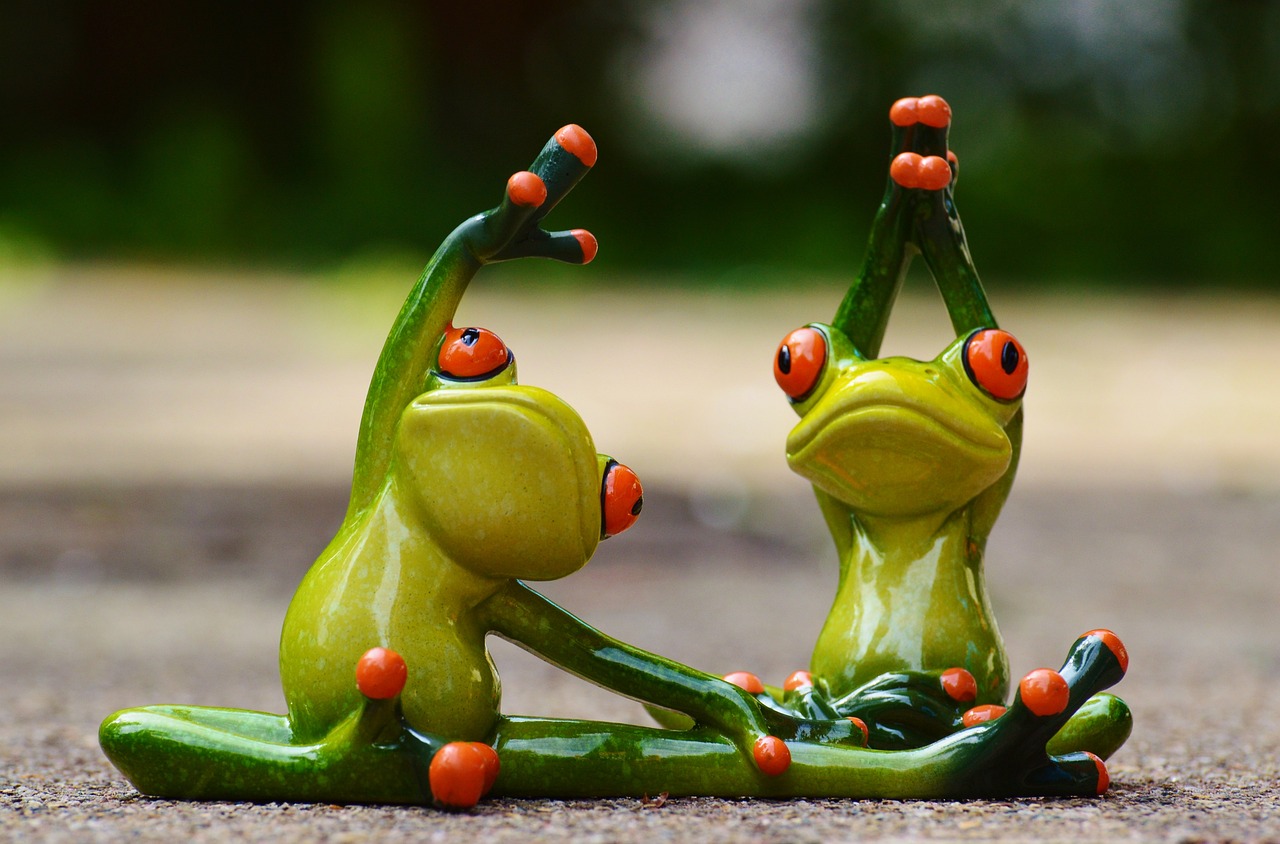
Understanding Situational Awareness
Situational awareness is more than just a buzzword; it's a critical skill that can make the difference between safety and danger. Imagine walking through a bustling city street, surrounded by people, cars, and countless distractions. In such an environment, your ability to recognize and interpret environmental cues can help you spot potential threats before they escalate into dangerous situations. This skill involves being aware of your surroundings, understanding the context, and predicting how various elements interact with one another.
At its core, situational awareness is about perception. It's not just about what you see but how you interpret those sights. For example, if you notice someone acting strangely in a crowded area—perhaps they're pacing back and forth or frequently checking their surroundings—your awareness kicks in, prompting you to assess whether this behavior might indicate a potential threat. By honing your situational awareness, you can effectively prevent dangerous situations from developing.
Furthermore, understanding situational awareness involves recognizing the importance of time. The sooner you identify a potential threat, the more options you have for responding. Think of it like playing chess; the better you are at anticipating your opponent's moves, the more likely you are to win the game. In self-defense, this means being proactive rather than reactive. Instead of waiting for a situation to become dangerous, you can take steps to avoid it altogether.
To illustrate this point further, consider the following key aspects of situational awareness:
- Observation: The ability to notice details in your environment.
- Perception: How you interpret and make sense of those observations.
- Assessment: Evaluating the potential risks based on what you've observed and perceived.
By developing these components, you not only enhance your ability to stay safe but also empower yourself to make informed decisions in real-time. In a world filled with surprises, mastering situational awareness can be your best defense.

Key Components of Situational Awareness
Situational awareness is not just a buzzword; it's a fundamental skill that can significantly impact your safety and decision-making abilities in any environment. At its core, situational awareness comprises three key components: observation, perception, and assessment. Understanding these components can empower you to respond effectively to potential threats and navigate your surroundings with confidence.
Observation is the first step in building situational awareness. It involves actively watching your environment and noticing the details that others might overlook. Think of it as being a detective in your own life—always on the lookout for clues that indicate something is off. This could be as simple as noticing an unfamiliar face in your neighborhood or recognizing when a group of people is acting suspiciously. To enhance your observational skills, consider employing techniques such as:
- Systematic scanning of your surroundings
- Focusing on specific areas of interest, like entrances and exits
- Paying attention to the behavior of those around you
Next, we have perception, which is all about interpreting the information gathered through observation. It's one thing to see something; it's another to understand its significance. Perception requires you to filter through your observations and determine what is relevant to your safety. For instance, if you notice a person pacing back and forth while glancing around nervously, your perception might lead you to conclude that this individual could pose a threat. The ability to accurately interpret sensory information is crucial for making informed decisions in high-pressure situations.
The final component is assessment. This involves evaluating the potential risks based on your observations and perceptions. It’s like being a chess player, always thinking a few moves ahead. You need to assess whether a situation is escalating and decide on the best course of action—whether it’s to confront a potential threat, avoid the area, or alert authorities. Developing this skill requires practice and a willingness to trust your instincts. Remember, your gut feelings are often rooted in subconscious observations that your brain has processed.
To summarize, the key components of situational awareness—observation, perception, and assessment—work together to enhance your ability to respond to threats effectively. By honing these skills, you not only prepare yourself for potential dangers but also cultivate a mindset that prioritizes safety in every aspect of your life.
What is situational awareness?
Situational awareness is the ability to recognize and interpret environmental cues to understand your surroundings and identify potential threats.
Why is situational awareness important in self-defense?
It allows individuals to detect and respond to threats before they escalate, enhancing personal safety and preparedness.
How can I improve my situational awareness?
You can improve it through observation techniques, mental conditioning, and practical drills that simulate real-life scenarios.
Are there specific environments where situational awareness is more critical?
Yes, urban environments with crowded spaces and outdoor settings like hiking trails present unique challenges that require heightened awareness.

Observation Techniques
When it comes to situational awareness, are your first line of defense. Think of your senses as a set of powerful tools that can help you navigate through the world safely. Just like a hawk soaring high above the ground, you need to be able to scan your environment with precision and clarity. By honing your observational skills, you can spot potential threats before they escalate into dangerous situations.
One effective method for improving your observational skills is to practice environmental scanning. This involves systematically surveying your surroundings, much like a detective piecing together clues at a crime scene. Start by taking a moment to look around you—what do you see? Are there any unusual behaviors or signs that stand out? By actively engaging with your environment, you train your brain to notice even the smallest details that could indicate a potential threat.
For instance, when you're in a crowded area, take note of the people around you. Are they acting normally, or is someone behaving suspiciously? Look for behavioral cues, such as someone who seems overly anxious or is avoiding eye contact. These subtle signs can often be the first indicators that something isn't right. You might ask yourself questions like: Why is that person lingering in one spot? What are they doing with their hands? This kind of critical thinking can make all the difference in ensuring your safety.
Another crucial aspect of observation techniques is maintaining a 360-degree awareness. This means training yourself to be aware of what's going on not just in front of you, but also to the sides and behind you. A great way to practice this is through the “five-second rule.” Set a timer for five seconds and challenge yourself to observe as much as you can within that time frame. What do you notice? What stands out? This exercise can help sharpen your perception and make you more attuned to your surroundings.
In addition, consider utilizing visual anchors to enhance your awareness. These are specific points of interest that you can focus on while scanning your environment. For example, when walking in a park, you might choose to pay attention to the entrances and exits, potential hiding spots, or even the layout of the area. By having these anchors in mind, you can quickly assess whether something seems out of place.
To wrap it up, mastering observation techniques is not just about looking; it’s about seeing. It’s about training your mind to pick up on the nuances of your environment and respond accordingly. By incorporating these techniques into your daily life, you’ll be better prepared to recognize potential threats and stay safe in any situation.
- What is situational awareness? - Situational awareness is the ability to perceive and understand what is happening around you, allowing you to respond effectively to potential threats.
- How can I improve my observation skills? - You can improve your observation skills through practice, such as environmental scanning, recognizing behavioral cues, and maintaining a 360-degree awareness.
- Why are observation techniques important for self-defense? - Observation techniques help you identify potential threats before they escalate, enhancing your personal safety and preparedness.
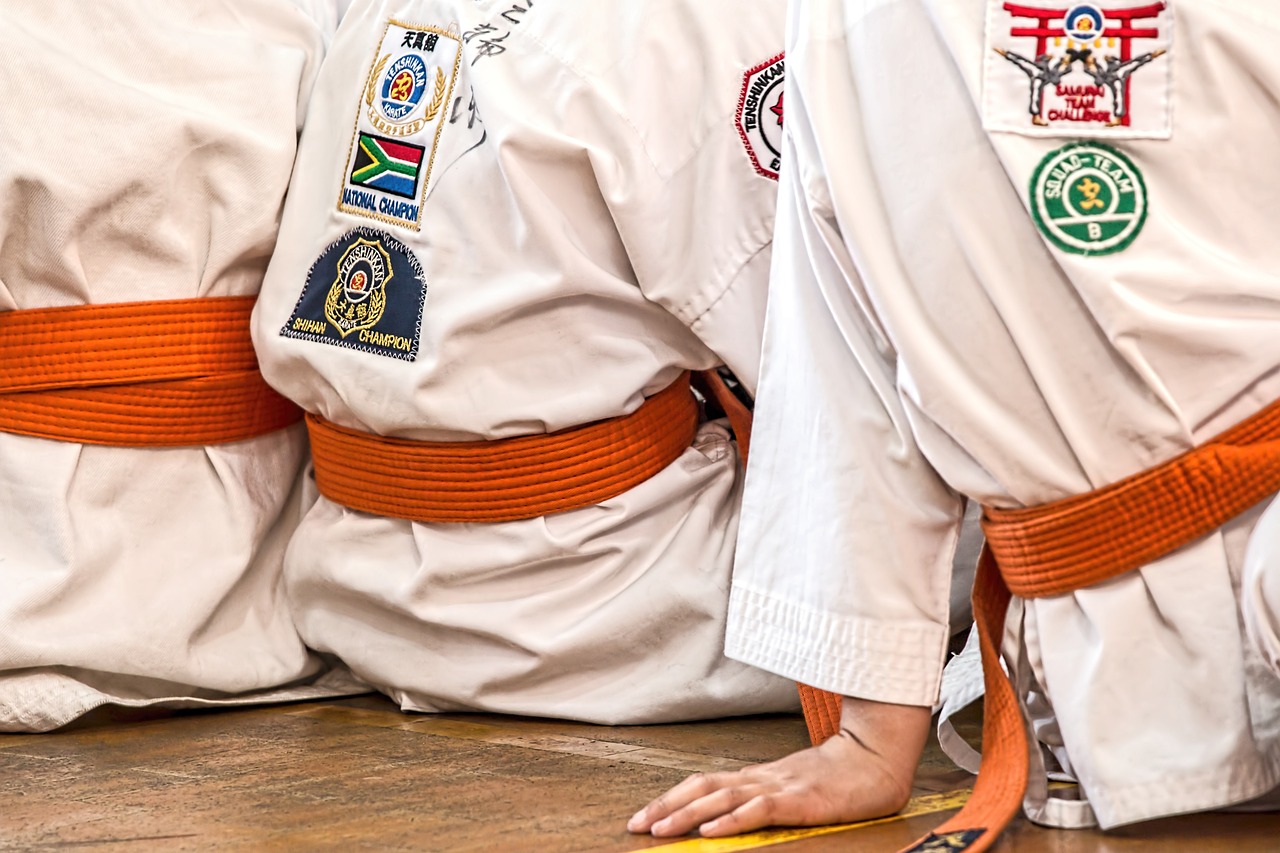
Environmental Scanning
Environmental scanning is a crucial skill in the realm of situational awareness, acting as the first line of defense against potential threats. Imagine walking through a bustling city or a quiet park; the ability to systematically survey your surroundings can mean the difference between safety and danger. The essence of environmental scanning lies in your ability to absorb and process the myriad of cues that your environment presents. This means not just looking but truly observing—like a hawk surveying its territory.
To effectively scan your environment, consider adopting the following strategies:
- 360-Degree Awareness: Train yourself to look in all directions. Don't just focus ahead; glance to the sides and behind you. This comprehensive approach helps identify any unusual activities or individuals that may pose a risk.
- Identify Exit Routes: Always be aware of your surroundings, including potential escape routes. Whether you're in a crowded mall or a secluded trail, knowing how to exit quickly can be lifesaving.
- Stay Alert to Changes: Pay attention to changes in your environment. A sudden shift in the behavior of people around you or an unexpected noise can indicate a developing situation that requires your immediate attention.
Moreover, it's not just about what you see but also about what you hear and feel. Your senses work together to create a complete picture of your environment. For instance, the sound of footsteps behind you in a quiet alley can alert you to someone approaching, even if you haven't seen them yet. This multi-sensory approach allows you to build a mental map of your surroundings, helping you to anticipate potential threats.
Practicing environmental scanning can be likened to tuning a musical instrument. At first, it may feel awkward or unrefined, but with consistent practice, it becomes second nature. Start by setting aside a few minutes each day to consciously observe your surroundings. Try to identify specific details: the colors of clothing people are wearing, the layout of the space, or even the general mood of the crowd. Over time, you'll find that your ability to notice these elements will sharpen, enhancing your overall situational awareness.
In conclusion, environmental scanning is not just a skill; it's a mindset. By cultivating this awareness, you empower yourself to respond effectively to potential threats, ensuring a greater sense of safety in any environment. Remember, the world around you is constantly changing, and your ability to adapt to these changes is key to staying safe.
- What is environmental scanning? Environmental scanning is the process of systematically observing and analyzing your surroundings to identify potential threats and hazards.
- How can I improve my environmental scanning skills? You can improve these skills by practicing regular observation exercises, staying aware of changes in your environment, and using all your senses.
- Why is environmental scanning important for self-defense? It allows you to detect potential threats before they escalate, enabling you to take preventive action and stay safe.
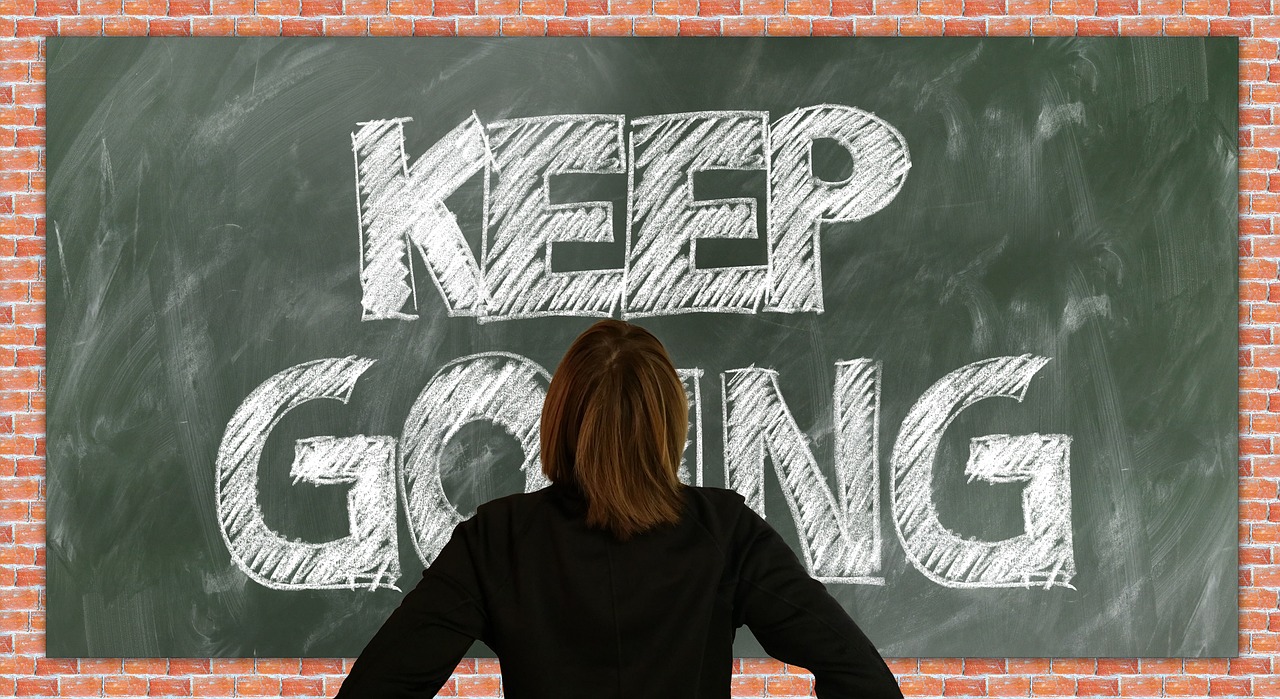
Identifying Behavioral Cues
When it comes to self-defense, is like having a sixth sense. It’s not just about being aware of your surroundings; it’s about tuning in to the subtle signals that people give off. Think of it as a radar system that helps you detect potential threats before they escalate. You might wonder, how can I become more attuned to these cues? Well, it starts with observation and understanding body language.
Body language is a powerful communication tool that can reveal a lot about a person's intentions. For instance, if someone is pacing back and forth, avoiding eye contact, or clenching their fists, these could be signs of agitation or aggression. Recognizing these signs early can give you precious seconds to assess the situation and decide how to respond. But it’s not just about reading negative cues; positive body language can also be informative. A friendly demeanor, open posture, and relaxed movements usually indicate safety and approachability.
Moreover, context is crucial when interpreting these cues. A person who seems nervous in a crowded subway might just be anxious about being late rather than posing a threat. Therefore, it’s essential to consider the environment and the situation. Are you in a bustling city center or a quiet park? Each setting has its own set of behavioral norms. To help you get started, here are some common behavioral cues to watch for:
- Increased proximity: If someone is invading your personal space, it could be a sign of aggression.
- Sudden movements: Quick, jerky motions may indicate that someone is agitated or ready to act.
- Facial expressions: Pay attention to frowns, scowls, or sneers, which can signal discomfort or hostility.
- Group dynamics: A group of people huddled together, whispering, might be plotting something; trust your instincts.
By honing your ability to interpret these cues, you can enhance your situational awareness significantly. Remember, it’s not just about looking for obvious threats; it’s also about understanding the nuances of human behavior. This skill can be a game changer, allowing you to navigate potentially dangerous situations with greater confidence and preparedness.
In conclusion, identifying behavioral cues is an essential aspect of situational awareness. By practicing observation and being mindful of body language, you can develop a sharper instinct for recognizing potential threats. The more you practice, the easier it becomes to read the room, ultimately enhancing your safety and preparedness in various environments.
- What are behavioral cues? Behavioral cues are non-verbal signals that indicate a person’s emotions, intentions, or state of mind, often communicated through body language.
- How can I improve my ability to identify these cues? You can improve this skill through practice, observation, and by learning about body language and social dynamics.
- Are all behavioral cues indicative of a threat? Not necessarily. Context matters; some cues may indicate anxiety or discomfort rather than aggression.
- How can I apply this knowledge in everyday situations? By being observant in your daily life, whether in crowded places or during social interactions, you can become more attuned to the behaviors of those around you.
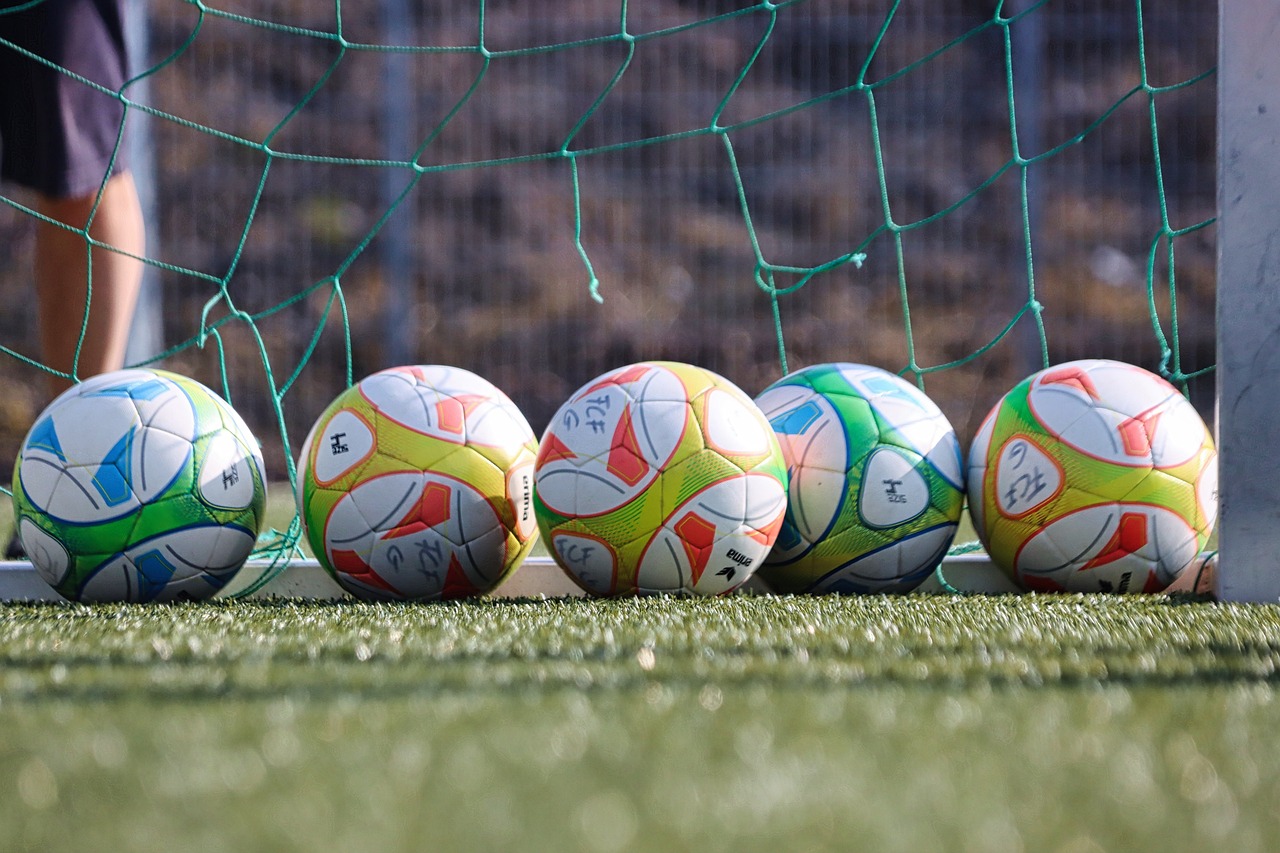
Perception and Interpretation
When it comes to situational awareness, perception and interpretation are like the dynamic duo of your personal safety toolkit. Imagine you're a detective, constantly piecing together clues from your environment. This is what perception does; it allows you to absorb sensory information from your surroundings. Whether it's the sound of footsteps behind you, the flicker of movement out of the corner of your eye, or even the smell of smoke, your senses are your first line of defense.
However, perception alone isn't enough. It's essential to interpret what you perceive accurately. This is where the real skill lies. For instance, you might notice someone acting oddly in a crowded space, but what does that really mean? Is it just a quirky person, or are they a potential threat? This is where your mental processing kicks in, allowing you to make informed decisions based on the context of the situation.
To enhance your perception and interpretation skills, consider the following techniques:
- Mindfulness: Practicing mindfulness can significantly improve your ability to focus on your surroundings. It trains your brain to notice details you might otherwise overlook.
- Active Listening: Engaging in conversations with full attention helps you hone your listening skills, which can translate to better awareness of your environment.
- Scenario Visualization: Regularly imagining various scenarios can prepare your mind to react appropriately when faced with real-life situations.
Think of your brain as a computer processing information. Just like a computer needs the right software to interpret data, your brain requires practice and experience to analyze environmental cues effectively. By honing these skills, you can significantly improve your ability to assess potential threats.
In addition, understanding the context is crucial for effective interpretation. For example, the same action might have different meanings in different settings. A person pacing back and forth in a business environment might be stressed, while in a quiet park, it could indicate agitation or a potential threat. Your ability to read these contexts can be the difference between staying safe and being caught off guard.
Ultimately, perception and interpretation are not just about seeing and hearing; they involve a complex interplay of cognitive processes that help you navigate the world around you. By sharpening these skills, you can enhance your situational awareness, making you more adept at recognizing and responding to potential dangers before they escalate. So, the next time you're out and about, remember to channel your inner detective and stay alert to the clues your environment is providing.
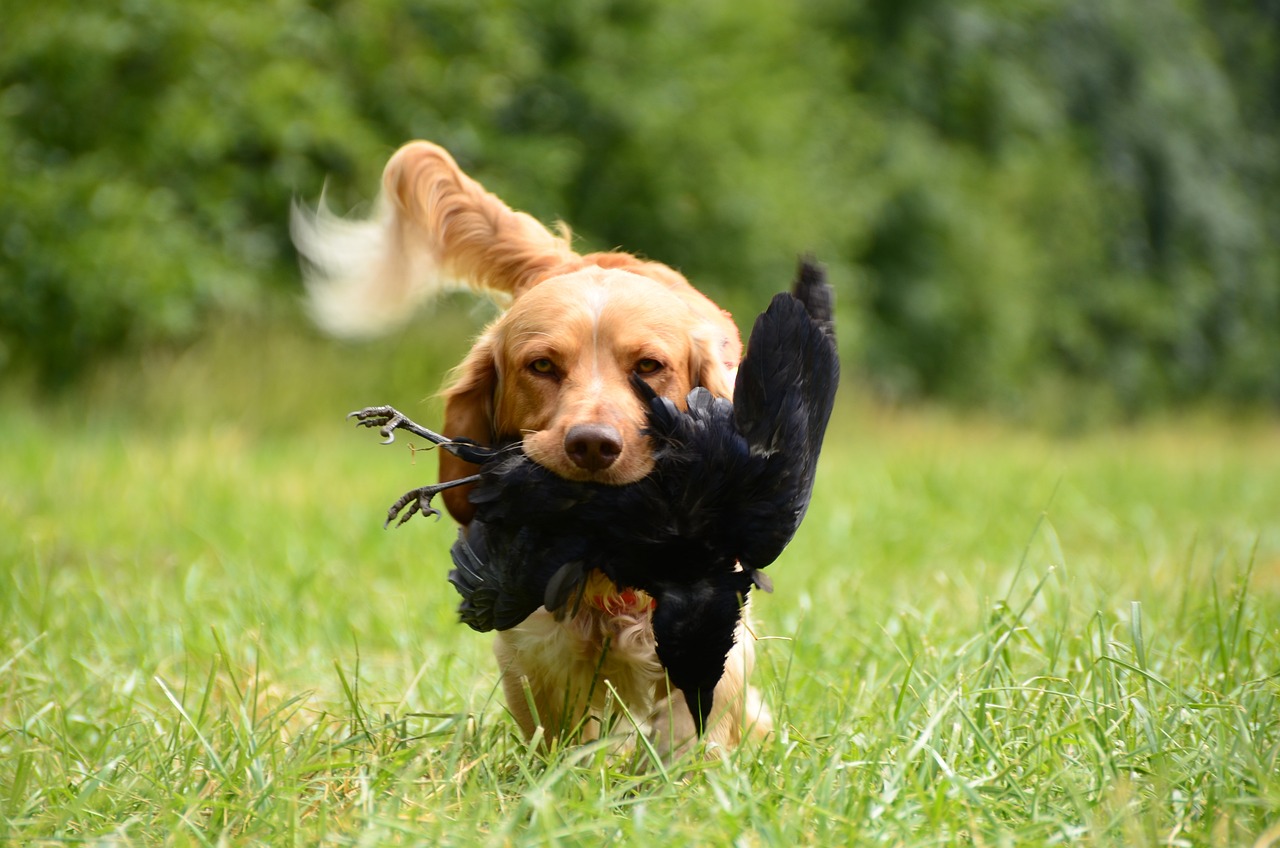
Training for Situational Awareness
Training for situational awareness is not just about learning to observe your surroundings; it's about cultivating a mindset that prioritizes safety and preparedness in every environment. Think of it as tuning a radio; if you're not on the right frequency, you might miss critical information. By engaging in structured training, you can enhance your ability to notice what others overlook, turning you into a vigilant observer of your world.
One effective approach to training is through practical drills. These exercises simulate real-life scenarios where situational awareness is crucial. Imagine walking through a crowded market or navigating a dimly lit parking lot. By practicing these situations in a controlled setting, you can learn to identify potential threats and develop quick decision-making skills. For instance, a drill might involve role-playing where one person acts suspiciously while others practice their observation skills. This not only hones your awareness but also helps in recognizing the signs of danger before they escalate.
Mental conditioning is another vital aspect of training for situational awareness. Techniques such as visualization and mindfulness can significantly enhance your focus and alertness. Visualization involves mentally rehearsing scenarios where you might need to be aware, helping to prepare your mind for real situations. On the other hand, mindfulness encourages you to stay present in the moment, sharpening your senses and making you more attuned to your environment. By incorporating these practices into your daily routine, you can build a robust mental framework that supports your situational awareness.
To further illustrate the importance of training for situational awareness, consider the following table that outlines various training methods and their benefits:
| Training Method | Description | Benefits |
|---|---|---|
| Practical Drills | Simulated real-life scenarios to practice observation and decision-making. | Enhances quick thinking and threat recognition. |
| Mental Conditioning | Techniques like visualization and mindfulness to improve focus. | Increases awareness and reduces response time. |
| Environmental Awareness Training | Workshops focused on recognizing and interpreting environmental cues. | Develops a deeper understanding of surroundings. |
Integrating these training methods into your life can create a ripple effect, improving not only your self-defense capabilities but also your overall confidence and peace of mind. After all, being aware of your surroundings isn't just about avoiding danger; it's about empowering yourself to navigate the world with assurance.
- What is situational awareness? Situational awareness is the ability to perceive and comprehend environmental cues to make informed decisions and respond effectively to potential threats.
- How can I improve my situational awareness? You can improve your situational awareness through practical drills, mental conditioning, and by consistently practicing observation techniques in various environments.
- Why is mental conditioning important for situational awareness? Mental conditioning helps you stay focused and alert, allowing you to respond quickly and effectively in potentially dangerous situations.
- Can situational awareness be trained? Yes, situational awareness can be trained through various methods, including practical drills, workshops, and mindfulness exercises.

Practical Drills
Engaging in is one of the most effective ways to sharpen your situational awareness. Think of these drills as the gym sessions for your mind; just as you wouldn’t skip leg day if you wanted to run a marathon, you shouldn’t overlook situational awareness training if you aim to enhance your self-defense skills. These exercises not only help you recognize potential threats but also train your brain to react swiftly and effectively in real-life situations.
One of the most popular drills is the Scenario Simulation. In this exercise, participants are put into a controlled environment where they must make quick decisions based on various scenarios. For example, imagine walking through a park and suddenly encountering a suspicious person. The drill would involve assessing the situation, deciding whether to engage, evade, or seek help, all while under the watchful eye of an instructor who provides feedback. This kind of practice not only boosts your confidence but also enhances your ability to read situations accurately.
Another effective drill is the Observation Challenge. In this activity, participants are tasked with observing a busy area, such as a café or a shopping mall, for a set period. Afterward, they must recount specific details about the environment, including the number of people present, their behaviors, and any unusual occurrences. This drill is akin to playing a game of memory; the more you practice, the sharper your mind becomes. Over time, you’ll find that your brain starts to automatically filter out the noise and focus on the details that matter.
Additionally, consider incorporating partner drills into your training. These involve working with a buddy to practice various self-defense techniques while maintaining situational awareness. For instance, one partner could act as an aggressor while the other practices defensive maneuvers, all while staying aware of their surroundings. This interactive approach not only makes the training more engaging but also mimics real-life scenarios where threats can come from unexpected angles.
To further enhance your training, you might want to establish a Routine Review practice. After each drill, take a moment to discuss what went well and what could be improved. This reflective practice is essential for understanding your strengths and weaknesses, allowing you to focus on areas that need more attention. Remember, the goal is not just to react but to anticipate and prevent potential threats before they escalate.
In summary, practical drills are the backbone of effective situational awareness training. By regularly engaging in these exercises, you’ll build a mental toolkit that prepares you for any situation life throws your way. The more you practice, the more instinctual your responses will become, transforming you from a passive observer into an active participant in your own safety.
- What is situational awareness?
Situational awareness is the ability to perceive, comprehend, and anticipate potential threats in your environment. It's about being aware of your surroundings and understanding what could pose a risk to your safety.
- How can I improve my situational awareness?
Improving situational awareness can be achieved through practical drills, environmental scanning, and mental conditioning exercises. Regular practice and reflection on your experiences can also enhance your skills.
- Are there specific drills I can do at home?
Yes! You can practice observation challenges by watching a busy street from your window and noting details. You can also simulate scenarios with friends or family to practice decision-making skills.
- How often should I practice situational awareness drills?
Consistency is key. Aim to practice at least once a week, but integrating awareness practices into your daily routine will yield the best results.
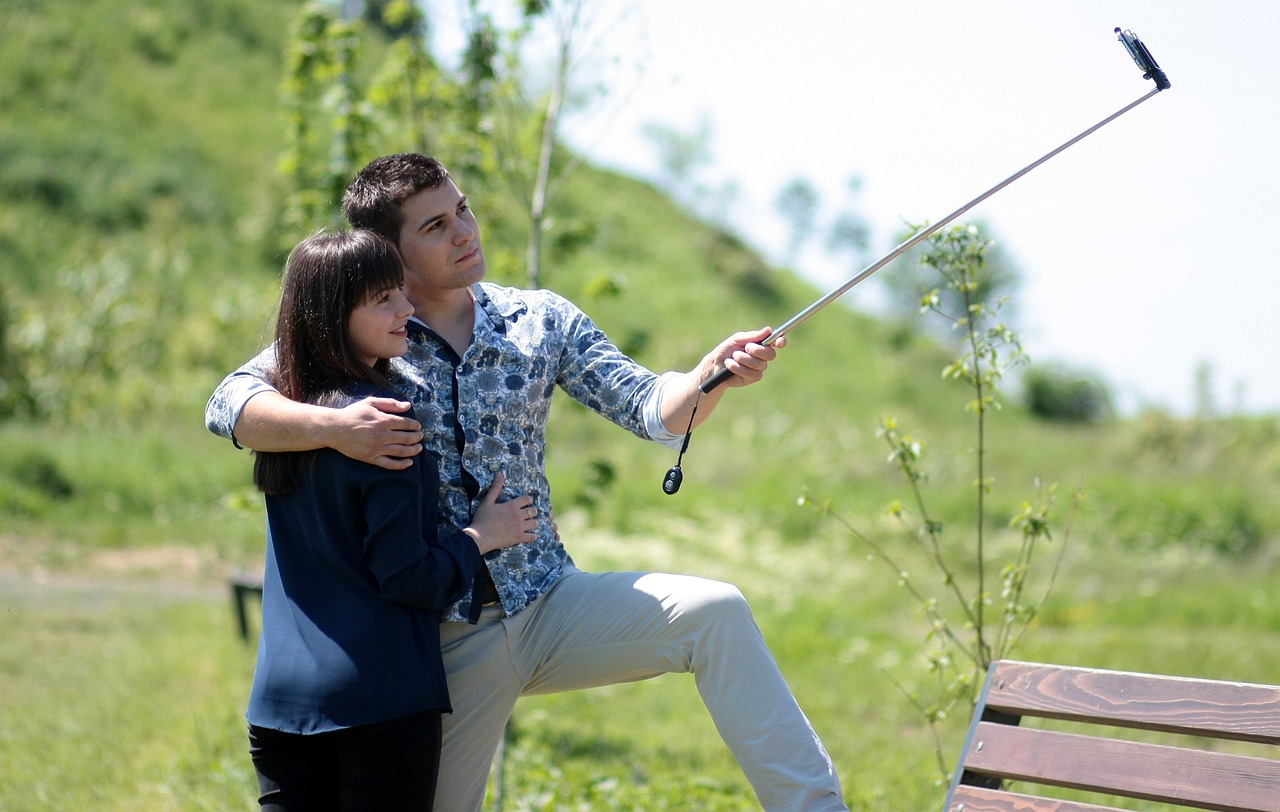
Mental Conditioning
Mental conditioning is an essential aspect of developing situational awareness in self-defense training. It involves training your mind to remain focused, calm, and responsive in potentially dangerous situations. Just like athletes visualize their performance before a big game, individuals can use similar techniques to prepare for real-life scenarios. This mental rehearsal helps to create a mental framework that can be accessed when the need arises, allowing for quicker and more effective responses.
One effective way to enhance mental conditioning is through visualization techniques. This practice involves imagining yourself in various situations where you might need to utilize your self-defense skills. By visualizing these scenarios, you can mentally prepare yourself for the unexpected. For instance, picture yourself walking in a crowded area and suddenly noticing a suspicious individual. How would you react? What steps would you take to ensure your safety? By repeatedly visualizing such situations, you train your brain to respond more effectively when faced with real threats.
Another crucial aspect of mental conditioning is mindfulness. This practice encourages individuals to be present in the moment, heightening their awareness of their surroundings. Mindfulness techniques can include deep breathing exercises, meditation, and grounding techniques that help you stay focused and reduce anxiety. When you're in a heightened state of awareness, you are more likely to notice subtle changes in your environment that could indicate a potential threat. Here are a few mindfulness techniques that can enhance your situational awareness:
- Deep Breathing: Take slow, deep breaths to calm your mind and body, allowing you to focus better.
- Body Scan: Regularly check in with your body to notice any tension or discomfort, which can distract you from your surroundings.
- Grounding Techniques: Use your senses to connect with your environment, such as noticing the sounds, smells, and sights around you.
Moreover, mental conditioning can be reinforced through scenario-based training. Engaging in role-playing exercises or simulations can help you practice your responses in a controlled environment. This type of training not only builds your confidence but also allows you to experiment with different strategies for maintaining situational awareness. Over time, these exercises can help you develop a more instinctual response to threats, making it easier to react appropriately when it matters most.
In conclusion, mental conditioning is a fundamental component of situational awareness in self-defense training. By incorporating visualization techniques, mindfulness practices, and scenario-based training into your routine, you can significantly enhance your ability to perceive and respond to potential threats. Remember, just as physical skills require practice, so too does your mental acuity. Stay sharp, stay aware, and always be prepared!
1. What is situational awareness?
Situational awareness is the ability to perceive and understand your environment and the potential threats within it. It involves being aware of your surroundings and recognizing changes that might indicate danger.
2. How can I improve my situational awareness?
You can improve your situational awareness by practicing observation techniques, engaging in mental conditioning exercises, and participating in scenario-based training to prepare for various situations.
3. Why is mental conditioning important for self-defense?
Mental conditioning is important for self-defense because it helps you stay focused and calm in high-pressure situations, allowing you to make quick and effective decisions when faced with threats.
4. Can mindfulness really enhance my situational awareness?
Yes, mindfulness can enhance your situational awareness by helping you stay present and attentive to your surroundings, allowing you to notice potential threats more readily.

Real-Life Applications
Applying situational awareness in daily life is not just an academic exercise; it’s a skill that can dramatically enhance your personal safety and preparedness. Imagine walking through a bustling city street or hiking on a serene trail; your ability to observe and interpret what’s happening around you can be the difference between a safe experience and a dangerous encounter. Whether you’re navigating crowded urban environments or enjoying outdoor activities, integrating awareness practices into your routine is essential.
In urban environments, the sheer volume of people and the fast pace of life can make it easy to become distracted. However, staying aware of your surroundings is crucial. Here are some key strategies to enhance your urban situational awareness:
- Stay Off Your Phone: It’s tempting to scroll through social media while walking, but this can blind you to potential threats.
- Use the 360-Degree Scan: Regularly look around you, not just ahead. This helps you notice unusual behavior or potential hazards.
- Trust Your Instincts: If something feels off, it probably is. Don’t ignore that gut feeling.
When it comes to outdoor safety, maintaining situational awareness is equally important. Activities like hiking or camping offer their own set of challenges. For instance, while enjoying nature, you might encounter wildlife or other hikers. Here’s how to stay alert:
- Know Your Route: Familiarize yourself with the area before heading out. This includes understanding the terrain and potential hazards.
- Stay Hydrated and Rested: Fatigue can impair your ability to notice changes in your environment, so take breaks and drink water.
- Be Aware of Your Surroundings: Listen for sounds that might indicate danger, such as rustling in the bushes or changes in animal behavior.
Ultimately, the goal is to create a habit of being aware. This means not just observing, but also interpreting what you see and making informed decisions based on that information. Building this skill can lead to a more confident and prepared mindset, whether you’re in a crowded mall or a remote campsite.
Q: What is situational awareness?
A: Situational awareness is the ability to identify, process, and comprehend information about your environment. It involves understanding what is happening around you to make informed decisions.
Q: How can I improve my situational awareness?
A: You can improve situational awareness through practice. Engage in observation drills, reduce distractions, and regularly assess your surroundings.
Q: Is situational awareness only important in dangerous situations?
A: No, situational awareness is beneficial in everyday life. It helps you navigate social interactions, avoid accidents, and make better decisions.
Q: Can situational awareness be trained?
A: Absolutely! There are numerous training programs and exercises designed to enhance your situational awareness skills, including practical drills and mental conditioning techniques.

Urban Environments
When it comes to navigating , situational awareness becomes your best friend. Imagine walking through a bustling city street, surrounded by a sea of people, cars zipping by, and street vendors calling out to passersby. It's a vibrant scene, but it can also be a potential minefield if you're not paying attention. By honing your situational awareness skills, you can significantly reduce the likelihood of encountering danger.
First off, it's essential to stay alert. This means not getting too absorbed in your phone or headphones while walking. Instead, take a moment to observe your surroundings. Are there individuals who seem out of place? Is someone following you? By being aware of your environment, you can spot potential threats before they escalate into dangerous situations.
Another crucial aspect of urban safety is understanding the layout of the area. Familiarize yourself with the streets, alleys, and shortcuts. Knowing where you are and how to get to safety can be invaluable. For instance, if you find yourself in a crowded area, try to keep your back to a wall or a solid structure. This positioning allows you to monitor the flow of people and vehicles around you, giving you a better chance to react if something feels off.
Additionally, be mindful of unusual behavior. If someone is acting erratically or seems overly interested in your belongings, it’s time to trust your instincts. The ability to recognize behavioral cues can be a game-changer. For example, if you notice someone lingering too long near an ATM or watching you from a distance, it might be wise to change your route or seek a more populated area.
Here are some quick tips to enhance your situational awareness in urban settings:
- Maintain Eye Contact: Engaging with people around you can deter potential threats.
- Use Your Senses: Pay attention to sounds, smells, and movements that seem out of the ordinary.
- Trust Your Gut: If something feels off, don’t hesitate to remove yourself from the situation.
In conclusion, navigating urban environments with heightened situational awareness can make all the difference in ensuring your safety. By staying alert, understanding your surroundings, and recognizing unusual behaviors, you can effectively protect yourself against potential threats. Remember, the city is full of life and excitement, but it also requires a vigilant mindset to enjoy it safely.
Q: What is situational awareness?
A: Situational awareness is the ability to identify, process, and comprehend information about your environment and potential threats.
Q: How can I improve my situational awareness?
A: You can improve your situational awareness by practicing observation techniques, engaging in mental conditioning, and participating in practical drills.
Q: Why is situational awareness important in urban environments?
A: Urban environments can be chaotic and unpredictable. By maintaining situational awareness, you can identify and respond to potential dangers before they escalate.

Outdoor Safety
When it comes to enjoying the great outdoors, safety should always be your top priority. Whether you’re hiking through a dense forest, camping under the stars, or simply taking a leisurely stroll in a park, maintaining a high level of situational awareness can significantly enhance your safety. Imagine yourself in a beautiful landscape, the sun shining, birds chirping, but lurking just beyond your vision could be potential risks. This is where being aware of your surroundings becomes crucial.
One of the first steps to ensuring your safety outdoors is to stay alert. This means actively observing your environment and recognizing any changes that could indicate danger. For instance, if you notice a group of people behaving unusually or hear sounds that seem out of place, it’s essential to trust your instincts. Your body often picks up on cues that your mind may not immediately register, so don’t dismiss that gut feeling.
When engaging in outdoor activities, it’s also wise to have a plan in place. Before heading out, familiarize yourself with the area you’ll be exploring. Consider the following factors:
- Terrain: Know the layout of the land, including any potential hazards like cliffs or rivers.
- Wildlife: Be aware of the animals that inhabit the area and how to react if you encounter them.
- Weather Conditions: Always check the forecast and be prepared for sudden changes in weather.
Additionally, it’s beneficial to travel with a buddy whenever possible. There’s safety in numbers, and having someone with you not only provides companionship but also increases your ability to notice potential threats. If you’re hiking or camping alone, ensure someone knows your itinerary and expected return time. This simple act can be a lifesaver.
Another vital aspect of outdoor safety is understanding how to respond to emergencies. This includes knowing basic first aid and carrying a well-stocked first aid kit. In the event of an injury or sudden illness, being prepared can make all the difference. Take some time to learn about common outdoor injuries and how to treat them. Here’s a quick table summarizing essential items to include in your first aid kit:
| Item | Purpose |
|---|---|
| Adhesive Bandages | To cover small cuts and abrasions |
| Antiseptic Wipes | To clean wounds |
| Gauze Pads | To dress larger wounds |
| Medical Tape | To secure dressings |
| Instant Cold Packs | To reduce swelling or pain |
Finally, always trust your instincts. If something feels off, it probably is. It’s better to be cautious and change your plans than to ignore your feelings and potentially put yourself in harm’s way. By incorporating these practices into your outdoor adventures, you can enjoy the beauty of nature while keeping safety at the forefront of your mind.
Q: What should I do if I encounter wildlife?
A: Stay calm and do not approach the animal. Back away slowly and make noise to alert it of your presence. If it's a dangerous animal, seek shelter or find a safe place.
Q: How can I improve my situational awareness while hiking?
A: Practice scanning your environment regularly, listen for unusual sounds, and be mindful of the people around you. Engaging in discussions about your surroundings with your hiking companions can also enhance awareness.
Q: What are some signs of potential danger in outdoor settings?
A: Look out for unusual behavior in others, signs of distress, or sudden changes in the environment, such as a sudden silence in wildlife sounds.
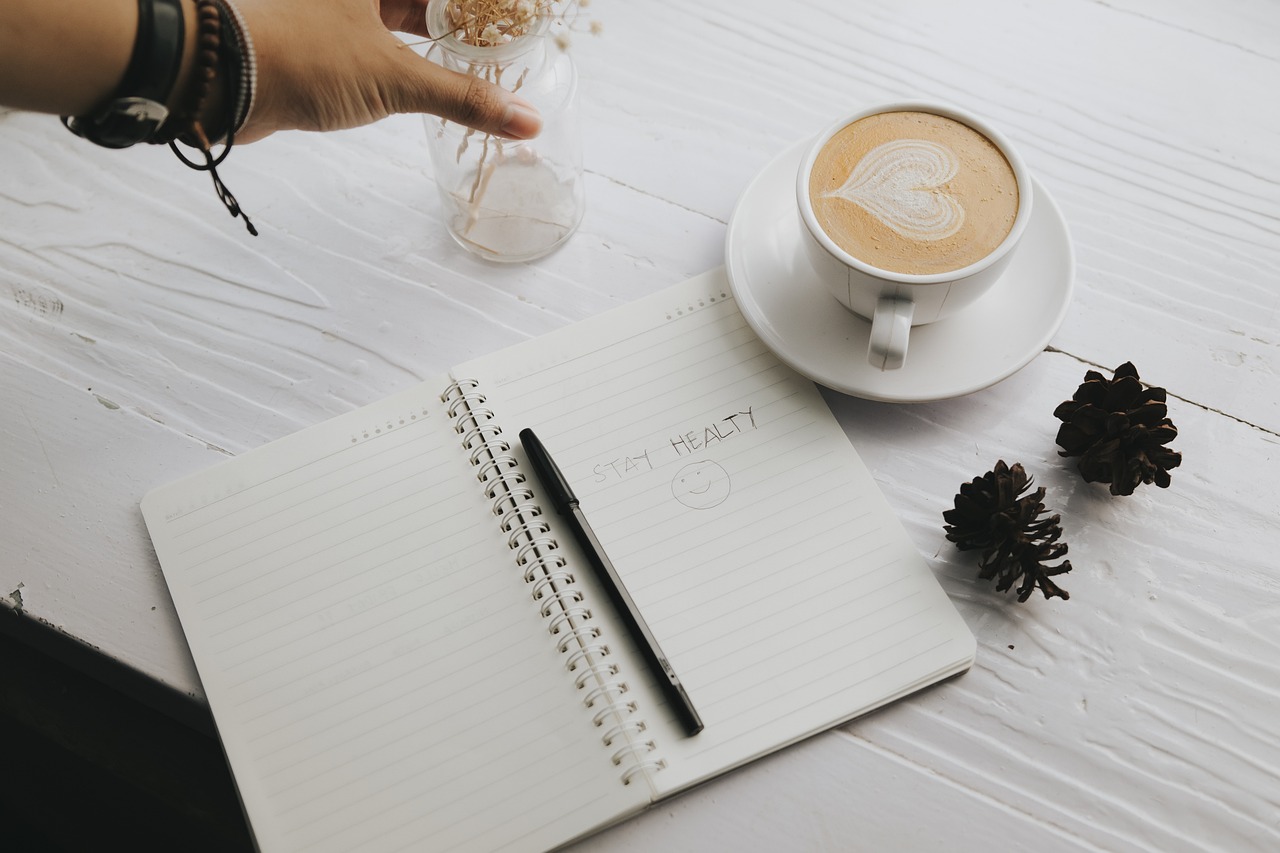
Conclusion
In conclusion, situational awareness is not just a skill; it's an essential component of self-defense training that can dramatically enhance personal safety and preparedness. As we've explored throughout this article, being aware of your surroundings and understanding the cues that your environment provides can make all the difference in potentially dangerous situations. By honing your ability to observe, perceive, and interpret these cues, you equip yourself with the tools necessary to prevent threats before they escalate.
Moreover, regular training and practice are crucial in developing these skills. Engaging in drills that simulate real-life scenarios, along with mental conditioning techniques like visualization and mindfulness, will help you respond more effectively under pressure. Remember, the goal is to not just react, but to proactively manage your safety and the safety of those around you.
Whether you're navigating the bustling streets of a city or enjoying the serene beauty of nature, integrating situational awareness into your daily routine can empower you to make informed decisions that prioritize your safety. As you become more attuned to your surroundings, you'll find that the world around you reveals important information—information that can keep you safe.
To summarize, here are the key takeaways regarding situational awareness:
- Recognize and interpret environmental cues to prevent potential threats.
- Engage in practical drills to sharpen your observational skills.
- Incorporate mental conditioning techniques to enhance focus and alertness.
- Apply your awareness in various environments to ensure personal safety.
By embracing the principles of situational awareness, you not only protect yourself but also contribute to a safer community. So, take the time to practice these skills and encourage others to do the same. Remember, safety is a shared responsibility!
Here are some common questions regarding situational awareness and self-defense:
- What is situational awareness? Situational awareness is the ability to identify, process, and comprehend information about what is happening around you.
- How can I improve my situational awareness? You can improve your situational awareness through practice, training, and by being conscious of your surroundings.
- Why is situational awareness important in self-defense? It helps you detect potential threats early, allowing you to take preventative measures before a situation escalates.
- Can situational awareness be trained? Yes, situational awareness can be enhanced through various drills, exercises, and mental conditioning techniques.
Frequently Asked Questions
- What is situational awareness?
Situational awareness is the ability to perceive and understand your environment and the potential threats within it. It involves recognizing cues, assessing situations, and making informed decisions to enhance personal safety.
- Why is situational awareness important in self-defense?
Situational awareness is crucial in self-defense because it allows individuals to identify potential dangers before they escalate. By being aware of their surroundings, people can avoid confrontations and react more effectively in dangerous situations.
- What are some key components of situational awareness?
The key components of situational awareness include observation, perception, and assessment. These elements work together to help individuals recognize threats and respond appropriately to ensure their safety.
- How can I improve my observation skills?
You can improve your observation skills by practicing techniques such as scanning your environment regularly, paying attention to unusual behaviors, and being mindful of your surroundings. Regular drills can also sharpen these skills.
- What is environmental scanning?
Environmental scanning is the process of systematically surveying your surroundings to identify potential hazards. This technique helps you stay alert to changes in your environment, whether in urban areas or secluded locations.
- How do I recognize behavioral cues that may indicate danger?
Recognizing behavioral cues involves observing body language, facial expressions, and actions of others. For example, someone who is overly fidgety or avoiding eye contact may be acting suspiciously and could pose a threat.
- What kind of training can enhance situational awareness?
Training methods such as practical drills and mental conditioning exercises can significantly enhance situational awareness. Engaging in scenarios that simulate real-life situations can help improve your decision-making skills under pressure.
- Can mental conditioning help with situational awareness?
Absolutely! Techniques like visualization and mindfulness can help individuals stay focused and alert, making them more responsive to potential threats in their environment.
- How can I apply situational awareness in urban environments?
To apply situational awareness in urban environments, stay alert to your surroundings, avoid distractions like your phone, and trust your instincts. Recognizing crowded areas and potential escape routes can also enhance your safety.
- What safety tips should I follow while outdoors?
While outdoors, maintain situational awareness by regularly scanning your environment, being aware of weather changes, and understanding the terrain. Always let someone know your plans and carry a means of communication for emergencies.



















